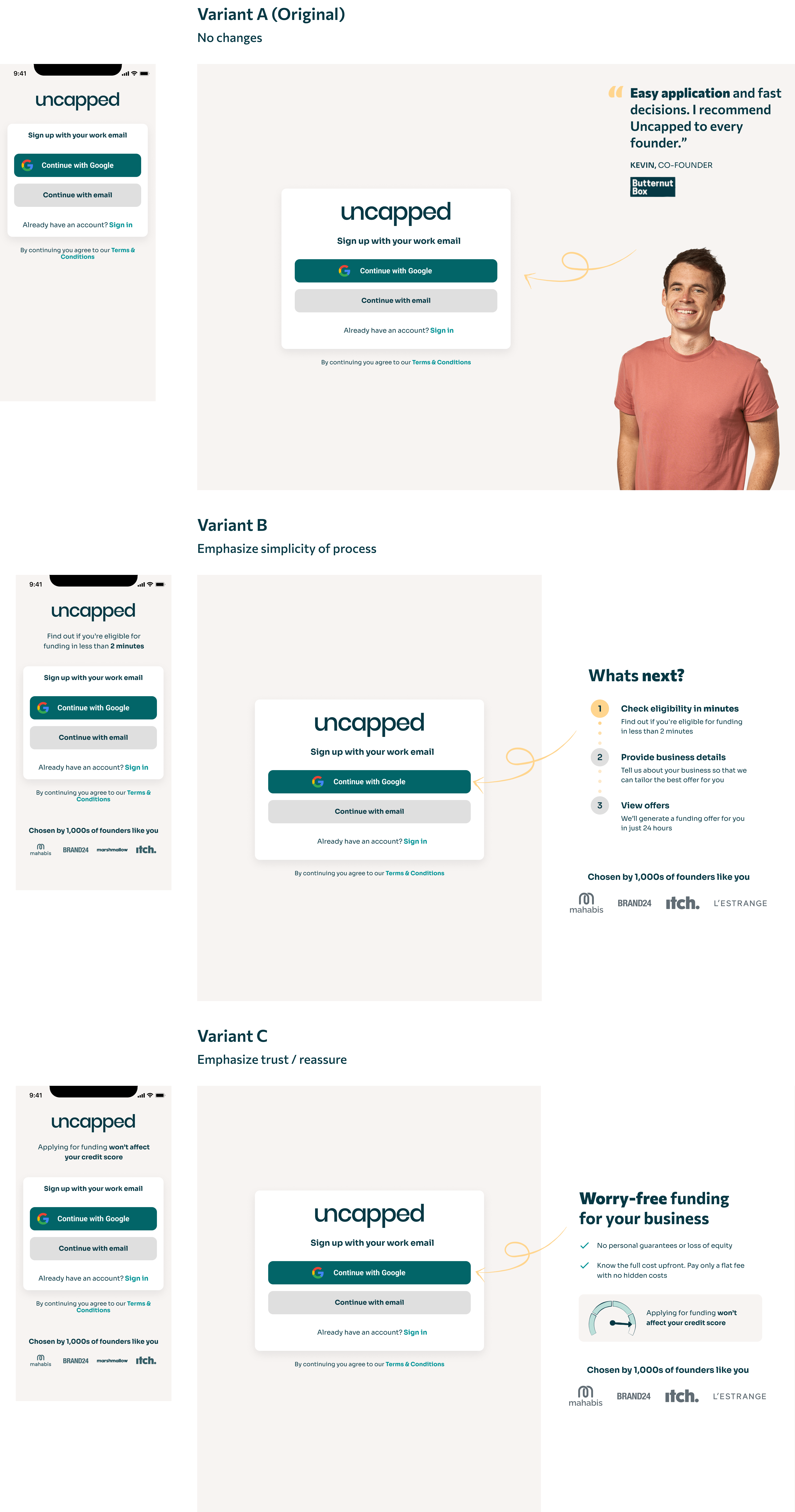May 2022
Sign Up Page
Problem
We had been aware that our sign up page was a conversion bottleneck for some time. Customers were educating themselves on our marketing website, clicking our 'Get Funded' CTA, landing on this page and then exiting.
Approach
We wanted to move quickly, so we started by analysing Hotjar recordings of the page but unfortunately, we couldnt draw any solid conclusions as to why some users were leaving the page.
Next, we scheduled two brainstorming sessions with the Onboarding team and came up with the following assumptions -
Users landing on the sign up page feel blocked by having to sign up and feel that the process is going to take too long
We have not built enough trust between Uncapped and the user at this point and users feel signing up is too much of a commitment

A screenshot from one of our brainstorming sessions
I then took the agreed assumptions and designed two variants to test against the existing sign up page -

Results
The experiment ran for two weeks with Variant B (emphasising simplicity of the process), proving the most impactful in increasing conversion rate from this page to the page that followed in the UX.
